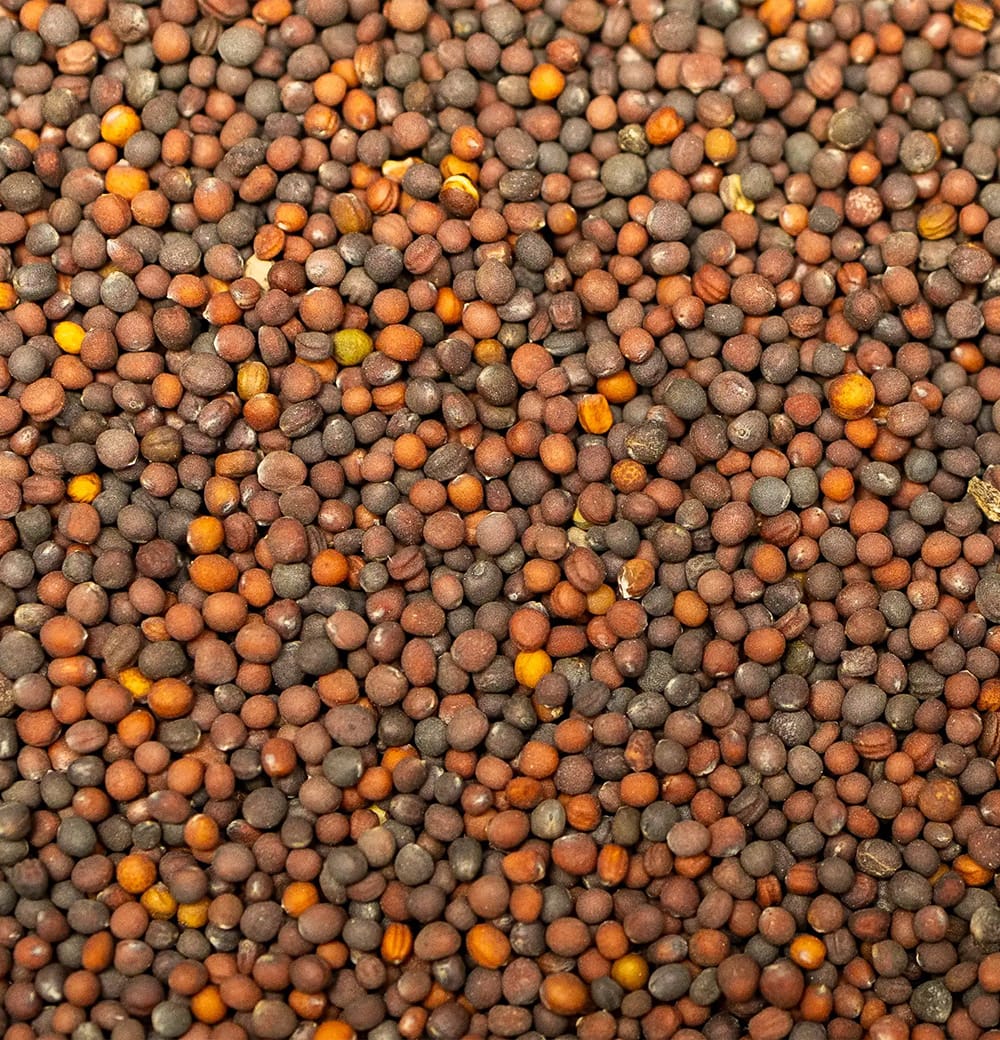Cover Crops
Your long term investment in improved soil health today.

What are Cover Crops?
Cover Crops are plants that are used to slow erosion, improve soil health, enhance water availability, smother weeds, help control pests and diseases, increase biodiversity, and bring a multitude of other benefits to your farm. Learn more about Cover Crops here.
Why should you care about cover crops?
• Reduce soil erosion from both wind and water
• Limit nitrogen leaching
• Suppress weeds
• Increase water infiltration
• Add organic matter
• Recycle nutrients
• Reduce soil compaction
• Add nitrogen to soil
• Improve soil health
• Provide feed
• Suppress disease
• Attract beneficial insects
• Keeps land in production
• Protect water quality
• Conserve soil moisture
Best to Use:
Choosing the right Cover Crops depends on:
• Time of year
• What crop will follow
• What your goals are
• Herbicides used
Reach out to our expert agronomist to find the perfect mix for you or check out our product list below:
Cover Crop Seed Products
| Product | Season | Seeding Rate | Description |
|---|---|---|---|
| Annaul Rye Grass | August - October | 15-30# / acre | Annual rye grass establishes very quickly, with a deep root system that does an excellent job of scavenging nitrogen and breaking up soil compaction. Seeded in fall, it may survive the winter and must be controlled in spring or you may have volunteer problems in the future as it will head out quickly. |
| Barley | March - April | 48-96#/acre | Barley can be used in spring. It has a bit lower yield than oats, but the grain is of higher quality. |
| Berseem Clover | May - June | 12-18# / acre | Berseem clover is a fast growing, summer annual legume. It must be cut before it blooms, or the plant will not recover. It is not frost tolerant, so must be seeded in late May to early June. It does best on heavier soils and establishes rapidly. |
| Buckwheat | June - July | 40-50#/ acre | Buckwheat is grown mainly as an emergency grain crop or to smother weeds. It requires a very short growing season, typically planted in July. Buckwheat does best in cool, wet years. It does not set seed well in hot, dry years. |
| Cereal Rye | August - November | 1 –1 ½ bu/acre | Winter cereal rye is a cool season crop seeded in fall and will germinate in soil temperatures as low as 34 degrees. It will give some growth in fall, though not as much as oats planted in fall, and will survive and break dormancy before anything else in spring. It will need to be killed in spring if corn or soybeans will be seeded, and the longer it grows the harder it will be to control. Rye does a good job of removing excess nutrients from the soil, spring residue can result in germination issues with subsequent crops. |
| Cow Peas | May - July | 50-75#/ acre | Cowpeas should be seeded from May-July for late summer grazing. They are excellent for weed control and cycle large amounts of nitrogen and phosphorus. Cowpeas also have good drought tolerance. They need hot weather and adequate moisture in order to produce well. |
| Crimson Clover | August - September | 15-20#/ acre | Crimson clover is a winter annual that can be planted in spring or fall. In fall, it needs to be seeded at least 40 days before a killing frost. Planting in spring will result in good cover but fewer flowers. It will likely winterkill when planted in fall. It has very little drought tolerance. |
| Field Peas | March - April | 50-90# / acre | Field peas are typically seeded with oats to provide a higher protein and more palatable silage crop. Tests have shown in increase in protein of 3- 5% and a reduction in NDF by 4-8 points over straight oatlage. Adding peas will increase total yield only if adequate moisture is available. Seeding rates are up to 100# peas and 2 bu of oats per acre, or 60% peas, 40% oats. |
| Hairy Vetch | August - September | 10-20# / acre | Hairy vetch is a very hardy winter annual legume. Plant in the fall at least 40 days before a killing frost. It is a nitrogen producer and phosphorus scavenger and will help with early spring weed control. Control in spring by close mowing or disking. If using glyphosate for control, add atrazine or 2,4- D. |
| Medium Red Clover | February - April | 10-12# / acre | Medium red clover is considered a biennial, typically lasting 2 years. It is used for pasture and hay, as well as a soil improvement crop as it is a good producer of soil nitrogen. It can be frost seeded very successfully. |
| Oats | March-April, August-September | 64-96# / acre | Oats is usually seeded in spring, but can also be seeded in fall. In fall, it will grow quicker and produce more than cereal rye. It will be killed by winter temperatures, but the stand will provide winter cover. |
| Pasja Hybrid Forage Brassica | March - September | 4-6# / acre | Pasja is a cross between rapeseed and forage turnips. Pasja is quicker to establish and provide feed than turnips. It does not contain a bulb like turnips, so there is no choking hazard and better drought tolerance. Pasja should be seeded in spring with oats or with BMR sorghum Sudangrass or pearl millet in summer. |
| Radish | August - October | 5-12# / acre | Radish is a member of the brassica family, like turnips. It can be seeded at a depth of ¼ - ½ “. It has a large tap root, growing up to 2” in diameter and up to one foot in depth. Radish does an excellent job of recycling soil nutrients, breaks up compaction and produces a large amount of biomass. It is killed at temperatures of 20-25 degrees. It will produce maximum forage production of allowed to grow for at least 60 days. Do not allow radish to go to seed, or volunteer will be a problem the next season. |
| Rapeseed | April - May, August - October | 4-8# / acre | Rapeseed is an annual, cabbage-like pasture crop used for livestock feed. The plant is multi-stemmed with fibrous roots. It accumulates large amounts of residual nitrogen, and helps turn insoluble phosphorus into a more available form. Rapeseed thrives on rich soils with plenty of moisture. Growth stops at maturity of the plant. |
| Sweetclover | February - April | 10-12# / acre | Sweetclover is a biennial. It is the most efficient legume for soil building; it adds more nitrogen to the soil in a shorter time than any other legume. Sweetclover is very winterhardy and grows on a wide variety of well-drained soils. Sweetclover will also grow in soils with higher pH values that alfalfa will tolerate. Yellow blossom sweetclover and white blossom sweetclover are available. The yellow blossom sweetclover is more drought tolerant and finer stemmed than white blossom sweetclover. White blossom sweetclover is 10-14 days later maturing than yellow blossom and is taller. |
| Triticale | March - April, September - October | 100# / acre | Triticale is a cross between wheat and rye, and is available in spring and winter types. Winter triticale will break dormancy later than rye in spring, but will produce more forage after April 15 than will rye. It will need to be killed in spring prior to planting row crops. |
| Turnips | August - September | 2-4# / acre | Turnips are used for grazing, livestock eat the tops and then consume the turnip roots. During the first 45 days, primarily tops are produced. Grazing can begin when the tops are about 12” tall. Protein levels in the tops average 20-25%, or about twice what the roots contain. Relative Feed Value of the tops is between 250 and 300. From 60-90 days, the roots develop. Plants will average about 15% of their volume in tops and 85% in the roots. Livestock dig up and eat the roots into the fall. Seed 50-60 days before a killing frost. Plants will not survive the winter. |
| Winter Peas | August - September | 75-90#/ acre | Winter peas are seeded in the August and September, they are an excellent producer of nitrogen. If they survive the winter, allowing them to grow till flowering will produce the most N. |
| Winter Wheat | September - October | 75-90#/ acre | Winter wheat is an option as a cover crop, but is usually used for grain production instead. |
| White Clover | March - May | 10-12#/acre | White clover is a perennial that does well on poorly drained soils. It spreads above ground by runners which send up new plants. It is a good pasture, hay and soil building crop. It is considered the best pasture for turkeys and hogs. It has a shallow root system and does not tolerate extended dry spells. |
Custom Mixes
Not sure the best mix for your field?
